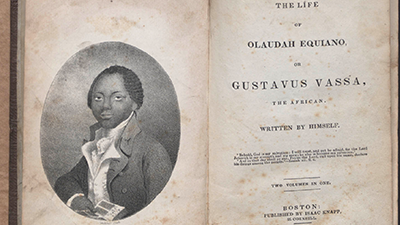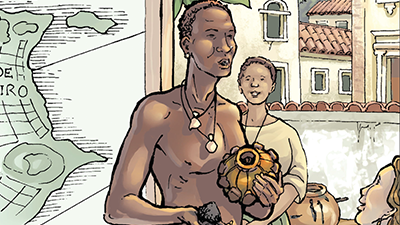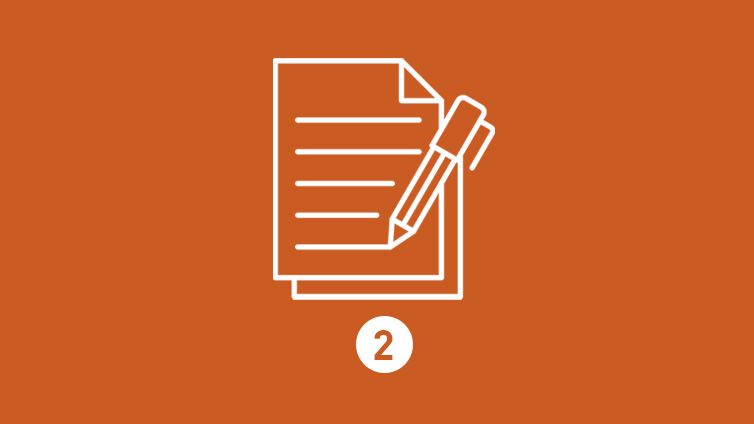The Transatlantic Slave Trade
Driving Question: What were the causes and effects of the Atlantic slaving system?
From the sixteenth to nineteenth centuries, the transatlantic slave trade enslaved and transported over 12.5 million Africans to the Americas. Millions died on this “Middle Passage.” For those who survived, other horrors awaited as they were sold into slavery to spend their lives working on plantations.
Learning Objectives:
- Understand and critique the motives and justifications for the transatlantic slave trade.
- Practice quick sourcing to assess first-person accounts of those involved in the transatlantic slave trade.
- Evaluate the effects of the slave trade on communities in Africa and the Americas.
Opener: The Transatlantic Slave Trade
The transatlantic slave trade was a brutal system that treated human beings as property to be bought and sold with little concern for their safety or wellbeing. Reading the words written by formerly enslaved people will help you begin to understand the horrors of this system.
An Age of Enslavement
In this article and source collection, you’ll see how Europeans became very wealthy—at the expense of societies in Africa and the Americas—and how enslaved people experienced this system.
-
Guiding Questions
-
Before you read
Preview the questions below, and then skim the article. Be sure to look at the section headings and any images.
While you read
Look for answers to these questions:
- What was the status of enslaved people in some parts of Africa before the involvement of the Europeans?
- What was the status of enslaved people in the medieval Muslim world?
- How did the transatlantic slave trade cause an increase in wars in Africa?
- What goods moved across the triangular trade?
- How did the transatlantic slave trade lead to the Industrial Revolution?
After you read
Respond to these questions: Given the range of types of slavery in different societies discussed in this article, is it useful to use the same term for all these different statuses? Why or why not?
The Middle Passage
Sometimes, when we focus on smaller scales, we can see the big picture more clearly. We’ll adjust our lenses to focus on a small region in Africa and the life of one enslaved man to better understand how the slave trade affected the entire continent.
-
Guiding Questions
-
Before you watch
Preview the questions below, and then review the transcript.
While you watch
Look for answers to these questions:
- What was the society around Cape Coast like before the Atlantic slave trade?
- What does the physical structure of Cape Coast Castle under the British, including its dungeons, tell us about the Atlantic slave trade?
- What were some of the economic impacts of the Atlantic slaving system on the coastal region?
- How did the Atlantic slaving system affect how people lived?
After you watch
Respond to these questions: How did the Atlantic slave trade affect Ghana in terms of all three frames used in this course? Do you think these effects were the same in other regions of Africa? Why or why not?
Key Ideas
-
Guiding Questions
-
Before you read
Preview the questions below, and then skim the comic, paying attention to things like prominent colors, shapes, and types of text and fonts. How do you know where to start and in which direction to read? What’s in the gutters (the space between panels)? Who or what is the focus of the comic?
While you read
- When and where was Domingos Álvares born?
- What was Álvares’s occupation, and why did this lead to his capture and sale to European enslavers by the King of Dahomey?
- Why was Álvares imprisoned in 1733?
- Why did the Catholic Church try to imprison Álvares in 1742?
- How does the artist use art and design to demonstrate the importance of community to Álvares?
After you read
Respond to this question: What does this graphic biography suggest about the different ways that history is used?
The Plantation System
Plantation slavery and capitalism arose in the same period. Were they systems that supported each other, or did capitalism help to end plantation slavery? Explore these ideas in the article and activity below.
-
Guiding Questions
-
Before you read
Preview the questions below, and then skim the article. Be sure to look at the section headings and any images.
While you read
Look for answers to these questions:
- Why does the relationship between capitalism and slavery have meaning today?
- Why does capitalism theoretically promote free rather than enslaved labor?
- What evidence is cited to support the argument that enslaved labor was an inefficient system for the owners of businesses?
- How does the author connect abolitionism to industrialists?
- How could the Atlantic slave trade have helped to stimulate industrialization and capitalism?
After you read
Respond to this question: Do you think capitalism would have become the dominant economic system in today’s world if the plantation and Atlantic slaving system had never developed?
Closer: The Transatlantic Slave Trade
In this unit, you’ve learned about how the world transformed as a result of new global connections. Now, it’s time to reflect on how what you’ve learned has changed what you think.









